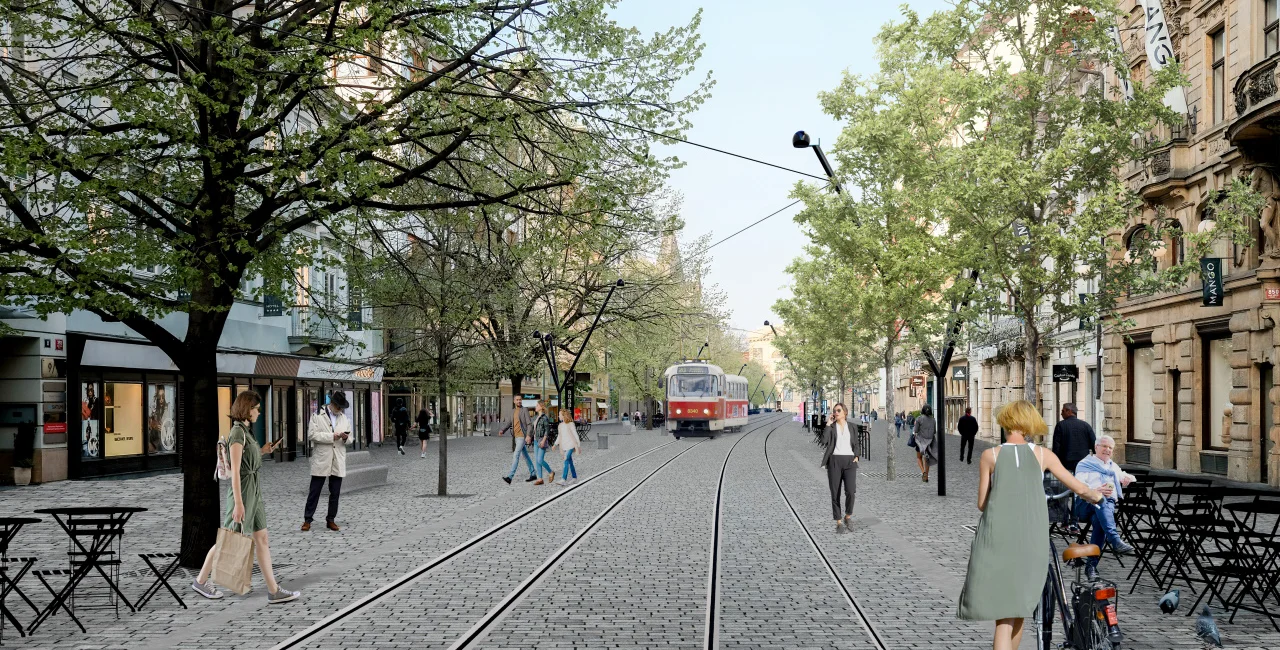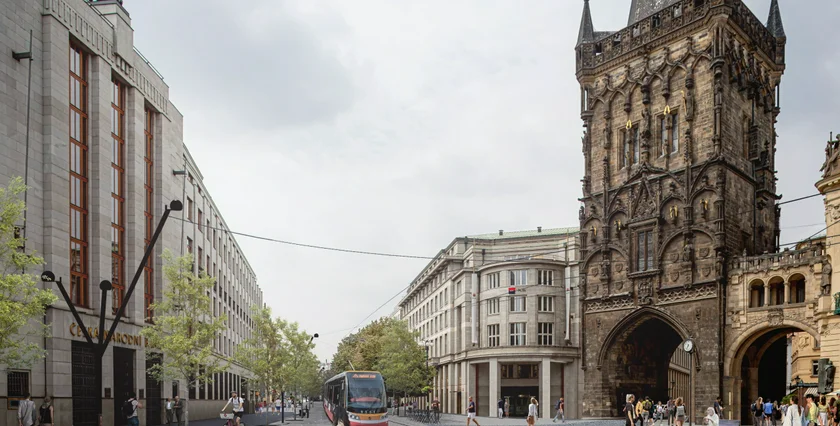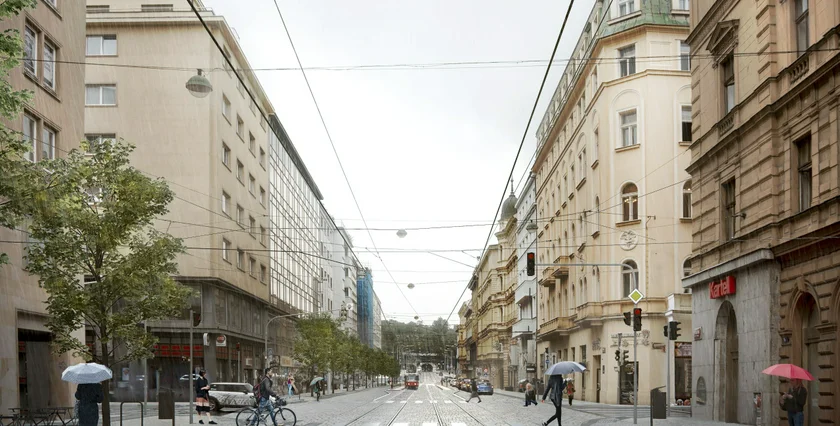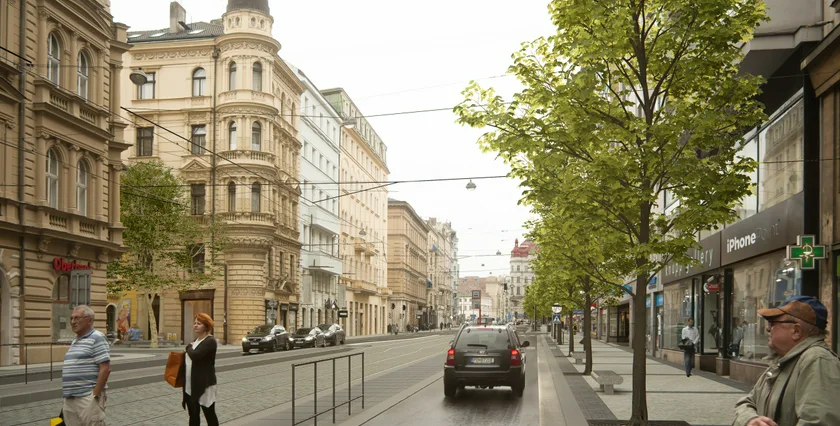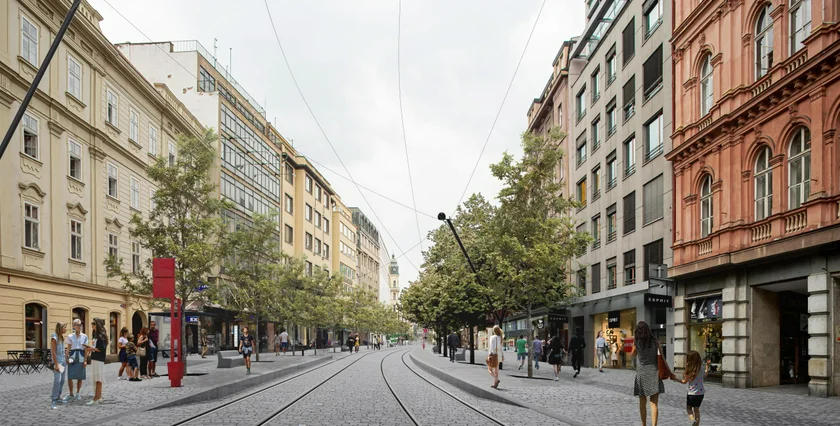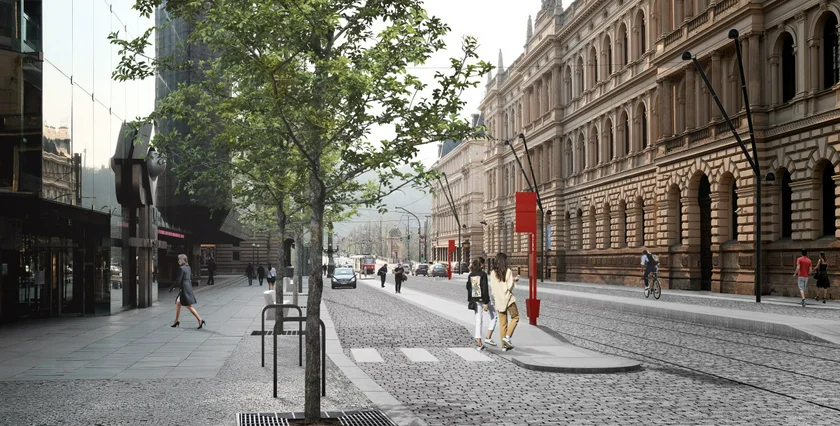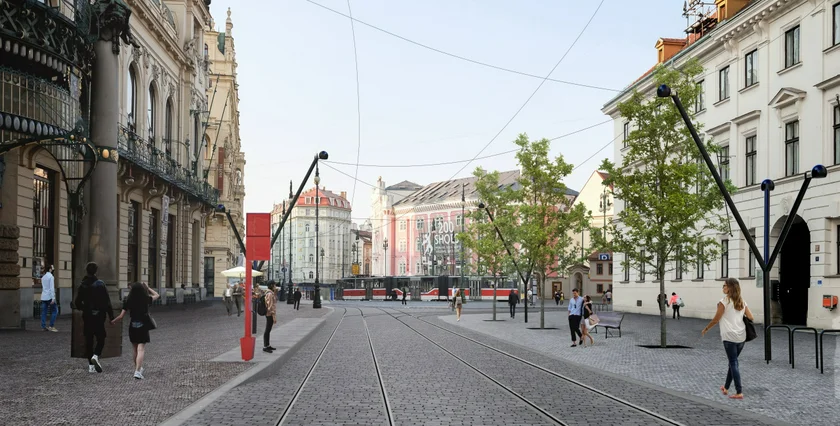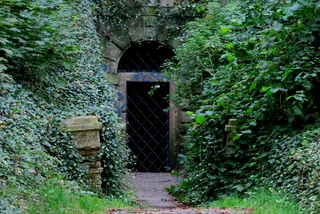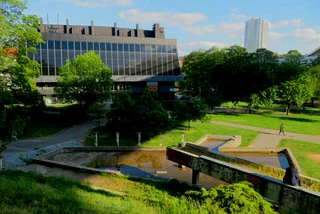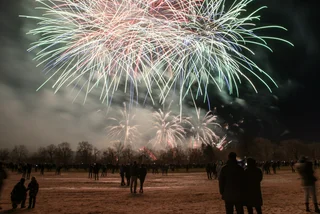One of the busiest areas in Prague’s city center will be transformed in the coming years. Prague City Hall has approved a completed study to make the two-kilometer stretch from Národní to Revoluční streets more user-friendly.
The goal of the project is to eventually make a boulevard and shopping concourse that stretches in an arc between the bridges Most Legií and Štefánikův most. A moat and a city wall (hradba) used to run along what is now Národní, 28. října, Na Příkopě and Revoluční streets.
"Part of the concept is also the design of a tram line that will connect the Náměstí Republiky, Národní třída and Muzeum stops. The tram used to run there until 1985, when the decision was made to cancel it after the metro construction was completed," Prague Deputy Mayor Adam Scheinherr, responsible for transport, said.
While the wall has been gone for centuries, the wide area of the moat still remains in the layout of the streets, which will be transformed into Hradební korza, roughly meaning “city wall promenade.” Na Příkopě means “on the moat” and Můstek is “little bridge,” more reminders of the area’s history.
Design work will start in the summer, and the physical changes to the streets should gradually start in two years, beginning with Revoluční Street. In addition to wider sidewalks and the removal of barriers, there will be two dozen new trees on Revoluční.
The Hradební korza project aims to extend Prague's main promenade shopping street from its currently defined stretch between Jungmannnovo náměstí and náměstí Republiky to the entire area from the Legion Bridge to the Štefánik Bridge.
There will still be car traffic on Revoluční and Národní streets, but changes to the street layout should make the streets easier for pedestrians to navigate.
“It is one of the busiest and also the most important cultural and social centers of Prague, however, today the space is saturated with unsightly advertising, mostly overloaded with car traffic both in motion and parked cars in the streets,” Prague Deputy Mayor Petr Hlaváček, responsible for territorial development, said.
“The study offers a solution to all these problems, there will also be a renovation of surfaces, the repair and addition of new furniture, and placement of greenery,” he added.
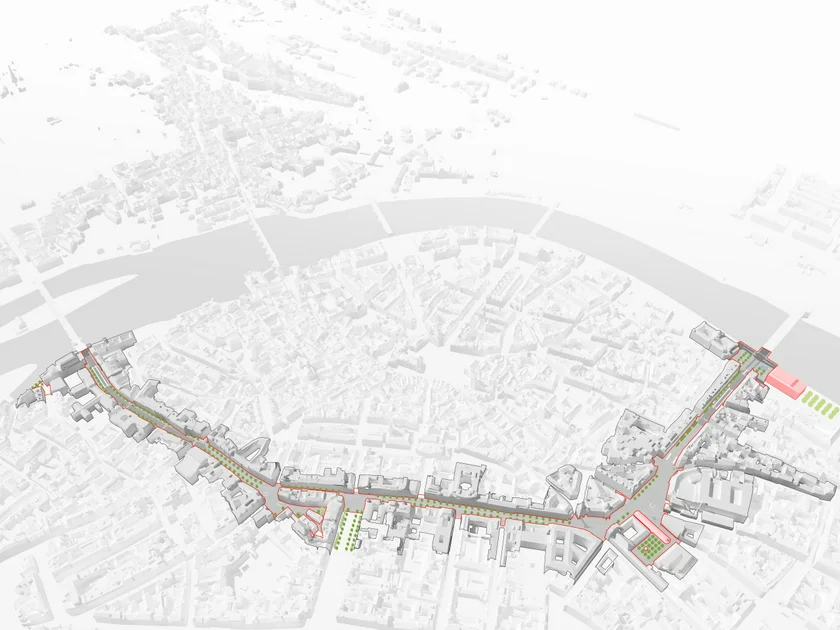
The city said it wants to ensure favorable conditions for non-motorized and public transport, to support a healthy economy, and create a high-quality public space.
The plan also envisions the revitalization of the area around the Powder Gate, the start of the Royal Route to Prague Castle.
The streets in the plan from the border between Prague’s Old Town and New Town districts. A wall stood at the edge of Old Town since the 13th century, but once Emperor Charles IV expanded Prague by establishing New Town in 1348, the wall was no longer needed. He proposed demolishing them, but they remained, falling into disrepair. The 10-meter-wide and eight-meter-deep moat became filled with garbage.
The walls were finally torn down in 1787 under the orders of Emperor Joseph II, who also had the moat filled so the two sections of the city could finally be joined. This made real estate much more desirable. Several palaces, banks, schools, restaurants, and cafes were built along the route of the former moat.
Na Příkopě eventually became a German-style promenade lined with chestnut trees. Currently, it has the highest commercial rent per square meter in the Czech Republic, and is one of the most expensive streets in the world, according to Cushman & Wakefield.
Prague’s Wenceslas Square is also being renovated in a separate project that is already underway. The two projects will meet at Můstek. A new fountain was put into operation on the bottom of Wenceslas Square at the end of May. More trees, new paving, and a wider pedestrian area have also been added. The upper part of the square will also be renovated.












 Reading time: 3 minutes
Reading time: 3 minutes 